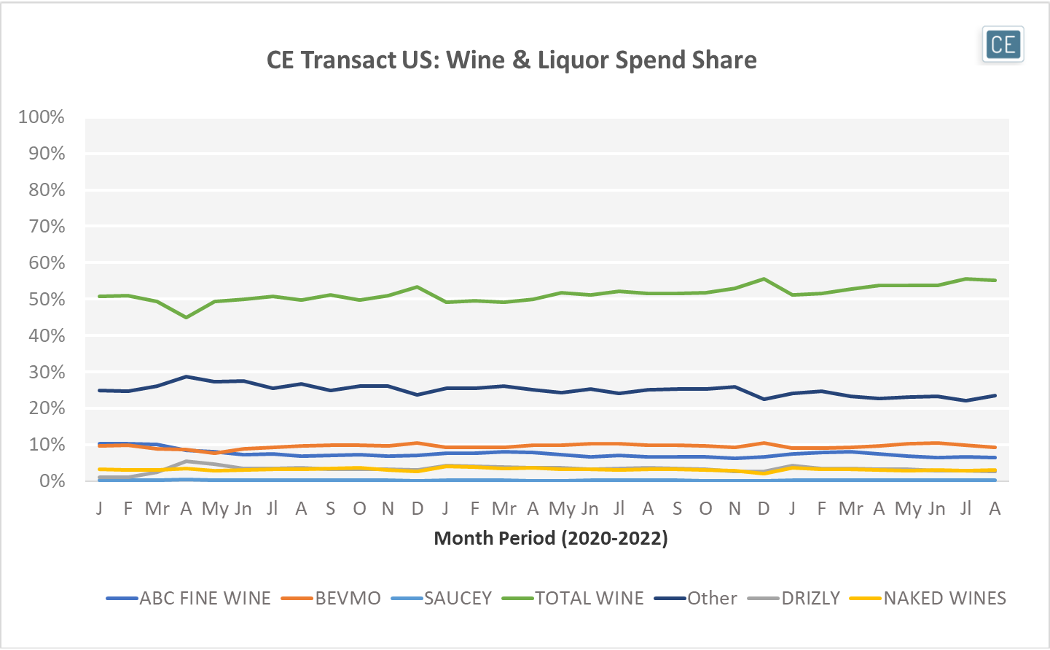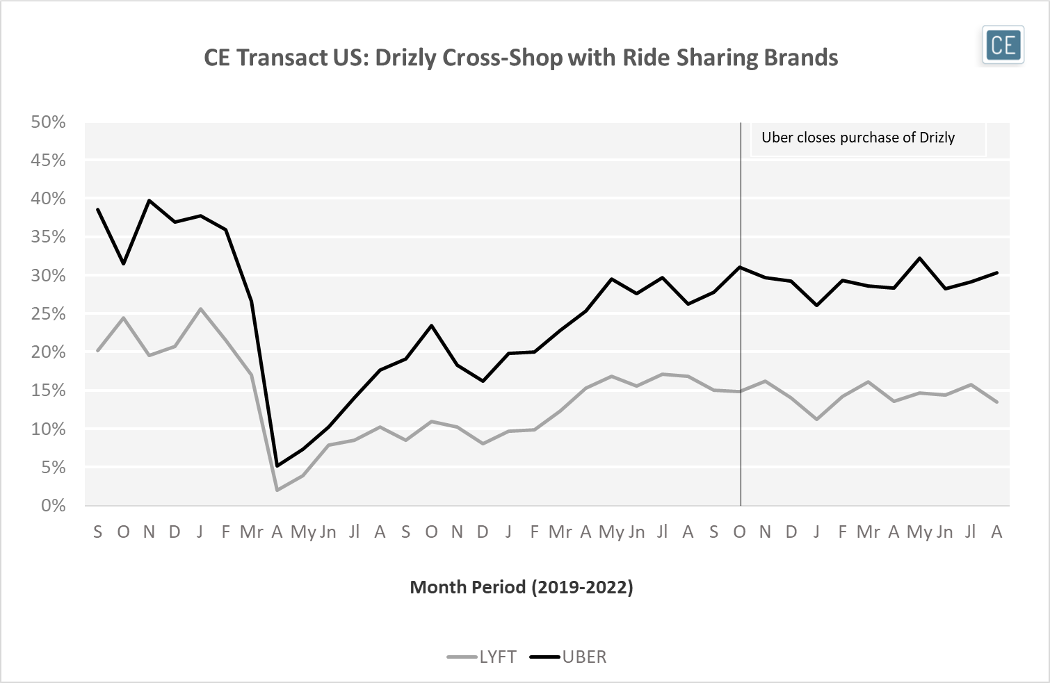
As at-home delivery services keep growing, Uber’s purchase of Drizly in October of last year seemed a natural synergy to complement Uber Eats and Postmates. But has Drizly been delivering? In today’s Insight Flash, we examine how Drizly’s direct business has fared over the last year since the purchase, looking at market share, average ticket, and cross-shop.
Market share of spend directly through Drizly has declined since the Uber purchase. In the three months before the deal closed in 2021, Drizly had risen to ~3.5% share of spend for tagged brands in the Wine & Liquor subindustry. However, that share has since declined by half a percent y/y in July and a full percentage point y/y in August. Sales directly through Total Wine have led the market among tagged brands at above 50%.
Market Share

Total Wine also captures the highest ticket price among tracked brands, at approximately $85 the first eight months of this year. This was 130% higher than Drizly’s over the same period, despite the fact that Drizly’s average charge includes delivery fees and tips. Delivery service Saucey has seen a similar average ticket. Interestingly, although Drizly users benefit from free delivery if they’re also Uber One loyalty members, average spend has increased 7.0% y/y, well above the subindustry average of 2.5%.
Pricing

Are Drizly users more likely to become Uber riders? Or is the brand merely adding to the Uber Eats assortment for customers already using the service? In August, over 30% of Drizly users paid for a ride with Uber, while only 13.5% took a Lyft. This does seem to be an area of synergy with the help of cross-marketing, as Uber’s cross-shop rate increased by a delta of 4.1% y/y while Lyft’s went down -3.3%.
Cross-Shop

To learn more about the data behind this article and what Consumer Edge Research has to offer, visit www.consumer-edge.com.







Sign up to receive our stories in your inbox.
Data is changing the speed of business. Investors, Corporations, and Governments are buying new, differentiated data to gain visibility make better decisions. Don't fall behind. Let us help.













Sign up to receive our stories in your inbox.
Data is changing the speed of business. Investors, Corporations, and Governments are buying new, differentiated data to gain visibility make better decisions. Don't fall behind. Let us help.





